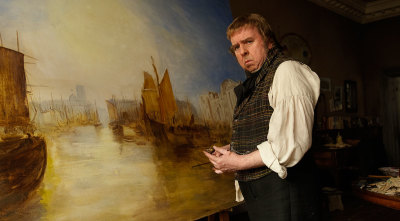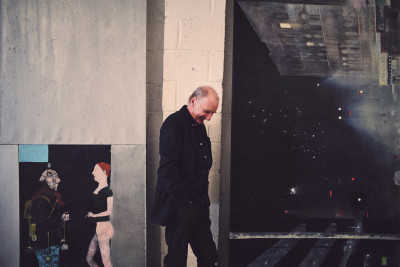10 expert tips on visiting the Summer Exhibition
10 expert tips on visiting the Summer Exhibition
By Mark Hudson
Published 13 September 2021
Faced with more than a thousand artworks, how can an art lover make the most of their annual pilgrimage to the Summer Exhibition? Veteran critic Mark Hudson draws from his professional experience to offer 10 useful pointers.
-
An earlier version of this article was published in in 2020.
Mark Hudson is a critic who has reviewed the Summer Exhibition for the Daily Telegraph and the Mail on Sunday.
Last year, the Summer Exhibition opened well into autumn, with full masking and social distancing – and this year, it’s much the same with the show opening in late September. The world’s oldest open-submission exhibition, an event that has taken place every year since 1769, through two world wars, wasn’t going to be defeated by Covid-19.
The Royal Academy Summer Exhibition offers exposure to thousands of artists – with all the potential for exhilaration and disappointment that entails. And for the critic it offers a challenge like no other exhibition.
If you’ve ever stood in one of the show’s immense rooms and looked around at the crowded walls with despair – not at the quality, but at the intractable diversity of what’s on offer – with a dizzying sense of all the vast galleries there are still to come, just think what it’s like to be there on a nightmare deadline. Imagine trying to sum up this behemoth of an exhibition – so vast you can barely remember the beginning once you get to the end – with the sort of tidy value judgement editors like (“Is it brilliant or shit?”), and all while being passably entertaining and of assistance (you hope) to other viewers.
-
If you’ve ever stood in one of the show’s immense rooms and looked around at the crowded walls with a dizzying sense of all the vast galleries there are still to come, just think what it’s like to be there as a critic on a deadline.
-
While the Summer Exhibition, like the Royal Academy itself, has massively transformed itself over the intervening decades – becoming sleeker, more contemporary, more relevant in every way – it remains daunting for the critic, particularly – perhaps surprisingly – when you’ve reviewed it a few times (in my case, ten).
The thought of having to find a fresh perspective on a show that always offers new themes, but remains in key aspects – scale, structure and general overwhelmingness – pretty much what it has always been, is enough to induce a sense of panic days in advance.
And how do you give a sense of its mind-bending diversity – from wood engravings to hi-tech video art and way, way beyond – without simply listing quirky details? How do you reach the end of this marathon exhibition, still clutching your notebook, without suffering critical dips in energy and morale?
The experience of the critic is the experience of the general viewer writ large and with added pressure. But that stress at least forces you to get to grips with an event that is generally considered un-sum-uppable.
So here, based on many hours spent tramping the salons of the Summer Exhibition, are a few tips on how to get the most out of what is in many ways the ultimate art exhibition….
-

Summer Exhibition 2021
Photo: Matt Humphrey
-
1. Don’t be snobby
This isn’t just another curator-led mega art jamboree like, say, the Venice Biennale or Frieze. To do justice to this supremely idiosyncratic event you need to get behind the idea that this is a show organised by artists for artists.This year around 15,000 submissions were whittled down to a still hefty 1,383 by a panel of leading Royal Academicians. These are augmented by the works of the Academicians themselves and the Honorary RAs, who include some of the biggest names in global art. But don’t go looking for the Ai Weiweis and Anselm Kiefers while turning your nose up at anything you think might be ‘amateur’. You’ll be hard-pressed to find anything that feels less than professional in the wacky outsider sense these days. As Grayson Perry RA demonstrated in the hugely popular and entertaining 2018 show which he co-ordinated, the open-submission artists – generally trained artists and often working in challenging conditions – are the soul of the Summer Exhibition.
-
2. Notice the unusual
Preposterous conjunctions of subjects and materials are one of the Summer Exhibition’s great pleasures: in 2019, all the talk was about a life-size pink tiger made from M&S sweet wrappers, by David Mach RA. Making a few choice selections of works like these can help distil your experience of the show.
-
3. Trust your gut, but find something new too
Faced with a show where no-one can possibly look at everything, you could do worse than follow the example of the critic, who, with a deadline looming, jettisons ‘objective criteria’ and passes through in an instinctive, bigoted surge of feeling and opinion. Let your eye and gut intuition draw you to the works that excite and inspire you. But don’t stick with what you know or think you ‘like’. You’ve got to come away with something new. Pick out a work in each room that’s outside your aesthetic comfort zone – or just plain baffling – and assess what the artist is trying to do.
-
4. Remember to look up
In days gone by, leading artists fought, sometimes literally, for the best positions on the gallery’s walls. And even today accommodating such a vast number of works through a ‘salon hang’ – from floor to ceiling – means that many great works are hung in less advantageous positions. So don’t forget to stand back and look up: the work you’ve dreamed of finding may be just a few feet above your head.
-
This isn’t just another curator-led mega art jamboree like, say, the Venice Biennale or Frieze. To do justice to this supremely idiosyncratic event you need to get behind the idea that this is a show organised by artists for artists.
-
5. Give architecture some love
I’ve generally felt that the architecture section was – how can I put this politely? – one of the less essential aspects of the Summer Exhibition. But this year, when so much in the wider world has felt unreal and uncertain, the practical, tangible nature of the exhibits, and the fact that exciting plans are still being made for the future, feels compelling and to a degree reassuring.
-
6. Give yourself permission to hate something
Seeking out something you actively dislike – rather than merely find dull or a bit irritating – takes real effort. As a critic it’s not enough to ‘quite like’ everything. You’ve got to find the extremes, from genius to abysmal, in everything you look at. Editors abhor a wishy-washy review, and so do the reading public. So be on the look-out for a work that exemplifies everything you dislike about the show and art today. And make sure you can articulate what you object to.
-

Summer Exhibition 2021 artwork from the Lecture Room
-
7. You don’t have to see everything
No matter how brave my start, I always begin to lose the plot in Gallery IV (which with typical quirkiness is actually the sixth space in the Main Galleries). By Gallery VII I’m starting to wish I need never look at any art ever again, before a mysterious renewal of enthusiasm comes over me in Gallery VIII. So nowadays I marshal my resources. I don’t try to look at every work, so that I can end the show just about remembering what I saw at the beginning. It’s all about knowing your limitations. And if all else fails, if you’re a Friend of the RA, you can visit again without losing out.
-
Seeking out something you actively dislike – rather than merely find dull or a bit irritating – takes real effort. So be on the look-out for a work that exemplifies everything you dislike about the show and art today.
-
8. Spot the big names
The days when Britain’s leading artists waited to unveil important new works at the Summer Exhibition are long gone. Most RAs put in a few works each year, but it would be a brave artist who chose to launch a major new direction in this mad melee of competing styles and approaches. Yet you can still get a sense of compelling departures from our senior artists. In 2019, I was drawn to a piece of striking but unforced expressionistic painting, amid the great fantasia of brushwork in Gallery III, I was intrigued to discover it was by Tracey Emin RA. Senior artist? Obviously.
-

Yinka Shonibare RA, 11 - AIR KID (GIRL), 2020.
fibreglass mannequin, dutch wax printed cotton textile, globe, brass, steel baseplate and umbrella.
-
9. Consider how the exhibition reflects the times
2019 was the year not only of Covid-19, but of Black Lives Matter, a fact brilliantly reflected in the first two rooms, where Isaac Julien RA payed tribute to the influential late curator Okwui Enwezor with beautifully chosen works by Chris Ofili, Sonia Boyce RA, Yinka Shonibare RA and others. Ask yourself how the exhibition reflects the times we’re living through.
-
10. Bring an imaginary (or real) chequebook
The Summer Exhibition is a great place to play Saatchi. Mentally rehanging your living spaces to fit your choice of works is a great way to get round this show. And with some prints going for under £100, it needn’t be a total fantasy. You will benefit both the RA and the artist – worth bearing in mind as times are even tougher for creative people.Summer Exhibition 2021 takes place in the Main Galleries and runs until 2 Jan 2022.
Browse and buy works online: https://se.royalacademy.org.uk/






